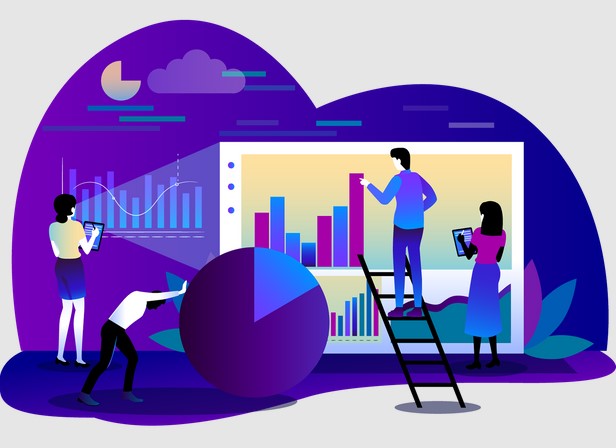In today's constantly evolving business landscape, employee engagement holds paramount importance. It goes beyond being just a trendy buzzword; it serves as a foundational element that can either make or break an organization. Employee engagement acts as the secret ingredient that ignites productivity, fosters innovation, and elevates overall performance. In the present era, companies are increasingly adopting data-driven approaches to not only assess but also enhance employee engagement. This comprehensive guide takes you on a detailed expedition into the realm of employee engagement analytics, ensuring no aspect is left unexplored. Prepare to gain profound insights into why fostering engagement matters, what aspects should be measured precisely, and how analytics can effectively be utilized to cultivate a culture of unwavering commitment within your organization.
The Significance of Employee Engagement
To truly understand the significance of employee engagement, one must acknowledge its profound impact. Engaged employees go beyond mere satisfaction; they are driven, dedicated, and genuinely enthusiastic about their work. They become powerful advocates for your organization and are more inclined to remain with the company, thus reducing expensive turnover rates. Moreover, engaged employees contribute significantly to productivity gains and innovative breakthroughs. In this context, analytics serve as a bridge that connects abstract concepts to actionable insights.
Identifying the Right Metrics
Measuring employee engagement resembles piecing together a complex puzzle. There isn't a single approach that fits everyone perfectly. Let's explore a range of metrics to gain a comprehensive understanding of engagement. In addition to traditional surveys, we will delve into pulse surveys, sentiment analysis, and even social media monitoring. This multi-faceted strategy ensures capturing the intricate aspects of engagement: from job satisfaction and workplace culture to communication effectiveness and work-life balance.
The Tools and Techniques
Selecting the appropriate tools and techniques for analyzing employee engagement is crucial. Our team of experts will guide you through the available options, assisting you in selecting those best suited to meet your organization's specific requirements. Immerse yourself in the realm of advanced survey software, AI-driven sentiment analysis tools, and the art of formulating insightful questions. Likewise, we'll help you customize your analytics approach to align with your unique organizational goals.
Transforming Insights into Action
The journey of collecting data is merely the starting point. The true potential of analytics reveals itself when those insights are transformed into actionable strategies. We provide you with the necessary skills to effectively analyze and interpret the data, uncovering trends, addressing pain points, and identifying areas primed for improvement. Learn how to create data-driven action plans that cater specifically to the needs of your workforce, forging a path towards a more engaged and motivated team.
Real-Life Success Stories
To illustrate the concepts in action, this narrative will share compelling real-world success stories from various organizations that have effectively utilized employee engagement analytics. These remarkable examples serve as concrete evidence of how analytics can revolutionize workplace culture, boost productivity, and yield impressive results for businesses. By delving into these transformative data-driven initiatives, readers gain invaluable insights into the power of leveraging employee engagement data.
Final Wording
In today's data-centric world, the organizations that truly shine are those who prioritize employee engagement and harness the power of analytics to drive continuous improvements. This guide has provided you with a comprehensive understanding of the importance of employee engagement analytics. It has equipped you to cultivate a more engaged, satisfied, and high-performing workforce by offering practical steps. Throughout this exploration, you have gained valuable insights into the realm of employee engagement analytics. Join us in our pursuit of creating an environment where employees thrive, productivity soars, and success becomes inevitable.
FAQ's
What is employee engagement analytics, and why is it important?
Employee engagement analytics involves the utilization of data and metrics for assessing the level of employee engagement in their work. This practice holds immense significance as engaged employees exhibit higher levels of productivity, job satisfaction, and commitment, which ultimately leads to enhanced organizational success.
What are the key metrics for measuring employee engagement with analytics?
The company evaluates various key metrics to gauge employee satisfaction and engagement. These metrics include scores on employee satisfaction surveys, turnover rates, levels of participation in company initiatives, peer recognition, as well as feedback gathered.
What tools and software can help with employee engagement analytics?
Various tools and software options are available for employee engagement surveys, sentiment analysis, and HR analytics. Tableau, SurveyMonkey, and Qualtrics are some examples of these software solutions.
Can analytics predict employee disengagement or turnover?
Analytics can effectively identify trends and warning signs. However, it falls short when it comes to predicting individual employee behavior with absolute certainty. Nevertheless, by enabling organizations to take preventive actions, analytics plays a valuable role in mitigating risks.
What are some best practices for using engagement analytics to create meaningful change?
To improve best practices, it is essential to involve employees in the process, set clear goals, create action plans based on data, and regularly revisit and adjust strategies. This approach ensures engagement, clarity, accountability, and adaptability throughout










0 Comments